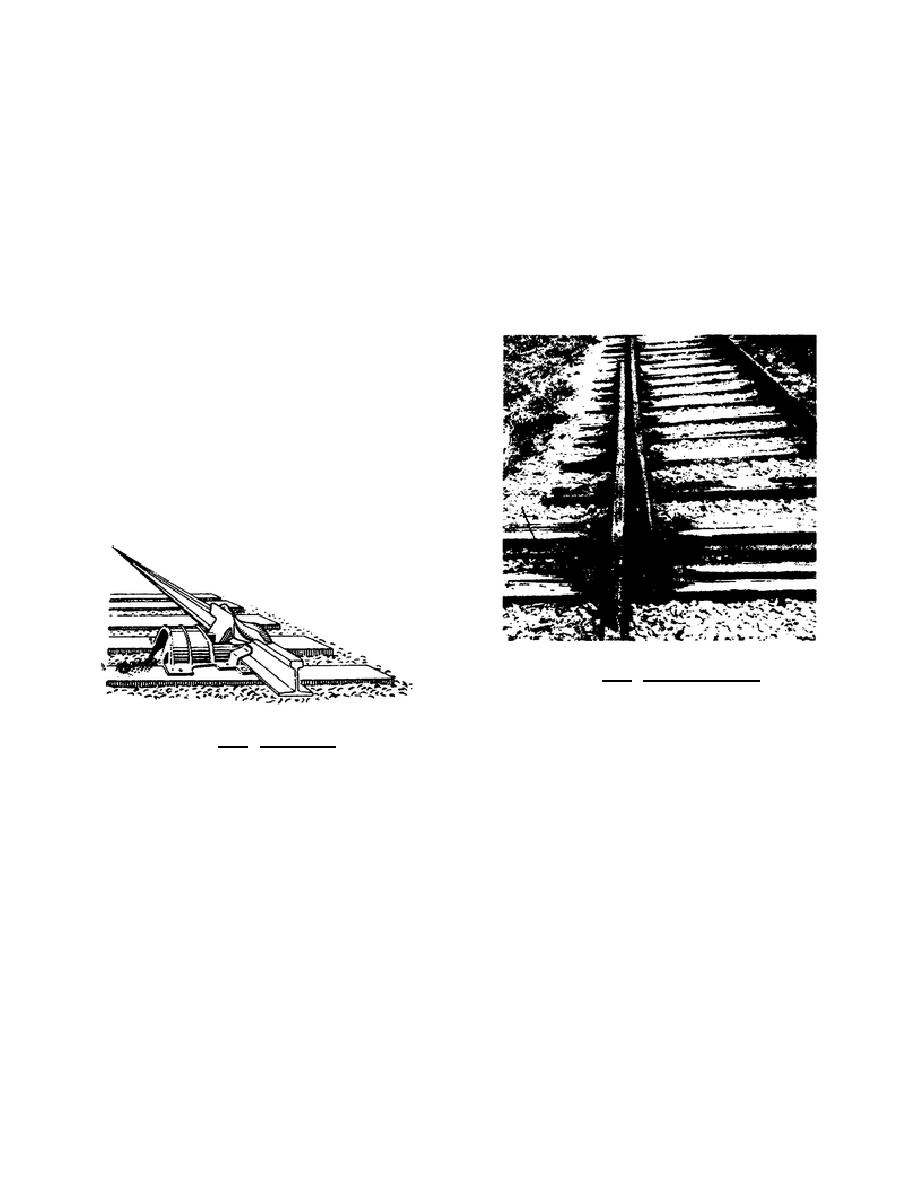
Trailing moves for the main-line side now force the points against spring tension.
2.32.
DERAILS
Derails are used to deliberately run a car or train off the rails to prevent its colliding with another or its
going into an open, movable-span bridge. The only place they are used on a main line is at the approach to such a
bridge. To prevent cars from running away or fouling a main track, derails are installed on storage tracks,
industry or depot connections, and similar spurs, especially when such tracks descend toward the main line.
Logically, equipment derailment is preferred to a locomotive's going into a river because of an open bridge or
onto a main line when a through train is passing the junction.
Split-point and frog derails are the two designs commonly used. The split-point derail, illustrated
in figure 2.19, a simple switch mechanism that leads
the car off the track, could be described as a switch
with no frog. Only one switch point is necessary,
and the curved stock rail leads nowhere. A derail
may be operated either manually or by remote
control. The arrow in figure 2.19 points to the
switch rod connected to the manually controlled
switch-throwing mechanism. The derail frog, shown
in figure 2.20, fits over one rail. Its grooved contour
guides the wheel flange up, over, and away from the
rail.
Figure 2.19. Split-Point Derail.
2.33.
TRACK CROSSINGS
Figure 2.20. Derail Frog.
Although crossings with other tracks should
be avoided, they are sometimes necessary. Such
track crossings are either cast solid or made of built-
up rail sections. Normally, built-up ones are used on
military railroads.
56


 Previous Page
Previous Page
